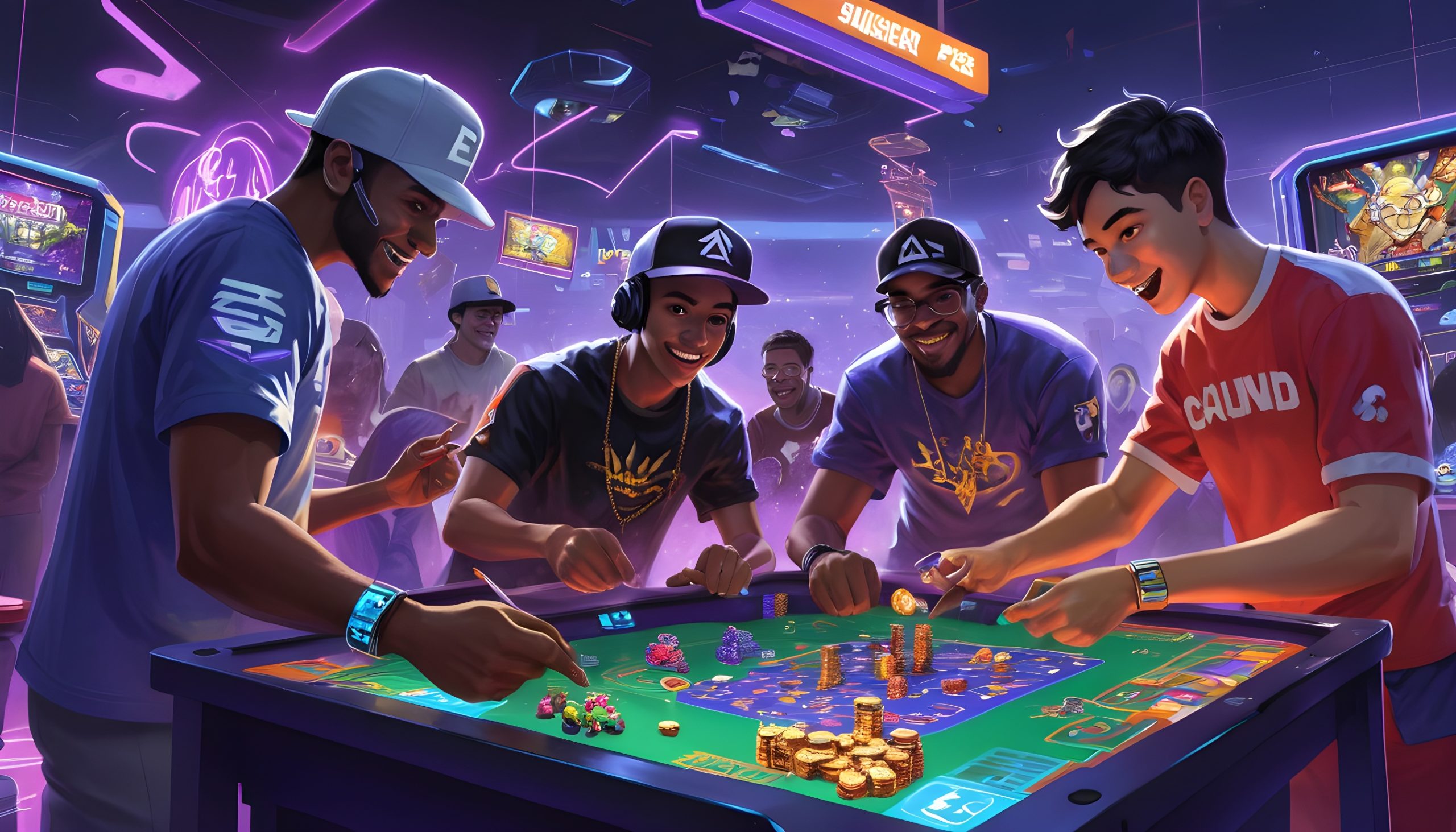The video game industry has traditionally relied on a model where players invest time and money into games, often competing for in-game rewards or social recognition. While engaging, this structure offers limited financial opportunities for players. Play-to-Earn (P2E) gaming presents a paradigm shift, introducing mechanics that allow players to earn cryptocurrency or NFTs (non-fungible tokens) through gameplay. This innovative approach not only fosters deeper player engagement but also holds the potential to change the gaming economy and create new avenues for financial inclusion.
This article explores the core tenets of P2E games, how they function, and the potential benefits and challenges they present.
Core Tenets of Play-to-Earn Gaming
- Concept: In play-to-earn gaming, players can make actual money or gain valuable digital assets like cryptocurrency or NFTs by playing games and being active participants in the gaming community.
- Shift in Focus: P2E games incentivize players not just for entertainment, but also for contributing to the game’s economy. By engaging in various activities within the game, such as completing quests, trading items, or participating in in-game events, players help to stimulate the virtual economy of the game world.
How Play-to-Earn Games Work
- In-game Assets: In-game assets, encompassing characters, items, and land, constitute virtual possessions integral to gaming experiences. These enable players to customize their avatars, enhance gameplay capabilities, and engage in virtual economies. Evolving beyond mere digital items, these assets now carry intrinsic value, often tied to rarity or utility, leading to robust in-game marketplaces where players buy, sell, and trade using in-game currency or real-world money. Thanks to blockchain and NFTs, ownership of these assets has become more secure and transferable, enabling players to retain full control.
- Earning Mechanisms: In Play-to-Earn (P2E) games, players can earn rewards through completing tasks, participating in competitions, trading in-game assets, staking, governance participation, and contributing to the game ecosystem. These avenues offer opportunities for players to engage, develop skills, and earn financial rewards, expanding the gaming experience beyond traditional gameplay.
- Tokenomics: Cryptocurrencies and tokens are central to the P2E ecosystem, facilitating transactions and incentivizing players. They’re used for buying, selling, and trading in-game assets, as well as participating in DeFi activities. The value of these assets is determined by factors like demand, supply, utility within the game, scarcity, and broader market trends.
Popular Play-to-Earn Game Examples
Axie Infinity (AXS): A pioneer in the P2E space, Axie Infinity is a monster-collecting game where players breed, battle, and trade adorable creatures called Axies (represented by NFTs). Players can earn the AXS token by playing and potentially generate income through various means. AXS can also be used to vote for governance proposals and can be staked to earn passively.
Decentraland (MANA): This metaverse game allows players to purchase and own virtual land parcels (NFTs). They can build experiences, participate in events, and monetize their land, all using the MANA token as the in-game currency. Users can set up their personal space or create and sell wearables and emotes.
The Sandbox (SAND): Similar to Decentraland, The Sandbox is a metaverse game where players own virtual land (NFTs) and can create voxel-based experiences or games on them. SAND is the platform’s token, used for buying and selling assets and participating in the in-game economy. The SAND token is deployed on Ethereum and has a total supply of 3,000,000,000 SAND.
Gala Games (GALA): This platform focuses on player-owned games with a variety of titles in development. GALA is the platform’s token, used for purchasing in-game NFTs and potentially influencing game development through governance.
Benefits of Play-to-Earn Gaming
- Earning Potential: Players can potentially generate income through gameplay and skilled participation. Earnings vary and may depend on factors such as the popularity of the game, the player’s skill level, the amount of time invested, and the current value of in-game assets and cryptocurrencies. Some players may earn modest amounts through casual gameplay, while others, particularly skilled or dedicated players, may generate substantial income by participating in competitions, trading valuable assets, or engaging in decentralized finance (DeFi) activities within the game.
- Ownership and Scarcity: Players can own unique in-game assets (NFTs) with potential value appreciation. This means players have full control over their virtual possessions, including characters, items, and land, and can freely transfer, trade, or sell them as they see fit. Additionally, scarcity adds another layer of value, as certain assets may be limited in quantity or possess unique attributes, making them highly sought after by players.
- Increased Engagement: In P2E games, the opportunity to earn real-world rewards or valuable digital assets motivates players to invest more time and effort into gameplay. This heightened engagement leads to deeper immersion in the game world, as players strive to achieve objectives, complete tasks, and compete with others to maximize their earnings.
Challenges of Play-to-Earn Gaming
- Initial Investment: One challenge in Play-to-Earn (P2E) gaming is the initial investment required to participate fully in the ecosystem. While many P2E games offer opportunities for players to earn rewards through gameplay, some aspects of participation may necessitate an upfront investment in in-game assets, cryptocurrencies, or hardware.
- Market Volatility: Due to the interconnected nature of P2E games with cryptocurrency markets, fluctuations in cryptocurrency prices can directly affect the value of rewards earned by players. Sudden price swings may lead to significant fluctuations in the purchasing power of in-game currencies or the value of virtual assets, affecting players’ ability to earn consistent rewards or profit from their investments.
- Scalability and Sustainability: Some Play-to-Earn (P2E) models may face scalability issues or possess unsustainable tokenomics over time. Scalability concerns arise from rapid growth, leading to network congestion and degraded performance, while unsustainable tokenomics can result in issues such as inflation or excessive token hoarding.
Conclusion
As blockchain technology advances and decentralized finance principles are integrated, P2E games are expected to increase rapidly, offering immersive experiences and economic opportunities for players. With the rise of metaverse concepts and mainstream adoption, P2E gaming is poised to improve traditional gaming, democratize access to economic benefits, and reshape the global gaming industry landscape.
















